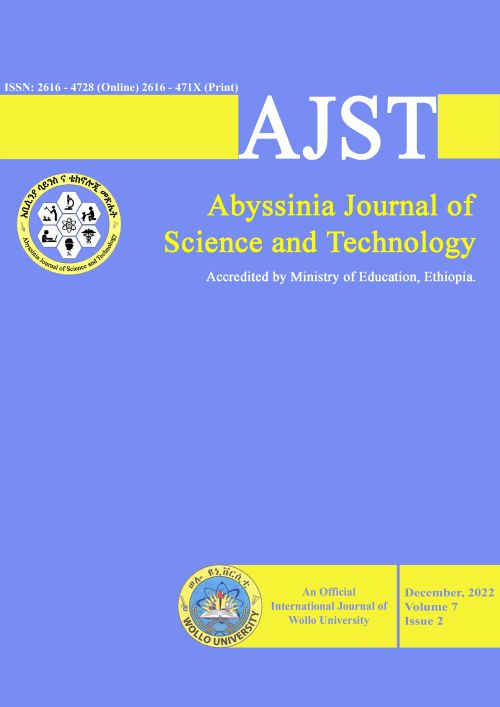Main Article Content
GGE-biplot analysis on seed yield of elite drought-tolerant chickpea (Cicer arietinum L.) genotypes in North-eastern Ethiopia
Abstract
Drought tolerance is an important objective in many plant breeding programs. Global annual yield losses due to drought stress may reach 50% depending on the crop’s growth stage and extent of drought severity. The present study was conducted to examine the yield performance and stability of elite drought-tolerant chickpea genotypes under diverse environments and to identify a stable genotype that performs well in moisture deficit environments using fourteen high drought index genotypes, including Fetenech (commercial variety). GGE biplot methodology was used to analyze genotypic stability across the environments. Additive main effect and multiplicative interaction (AMMI) analyses revealed significant (P < 0.01) genotype (G) and environmental (E) effects as well as G×E interaction with respect to chickpea yield. As per the AMMI analysis,66.1% of the total variation was attributed to the environment, while G and G×E interaction explained 8.2%and 11.5%, respectively. According to AMMI’s stability value (ASV), the most stable genotypes were G9 and G1, considering both mean yield and ASV. The testing environments were clustered into two mega environments. The study clearly shows that G1 is near to the ideal genotype that does well under terminal moisture deficit environments with desirable and stable attributes with a yield advantage of 29.1% over standard cultivar (Fetenech). Further research on molecular and physiological analysis has to be conducted to identify gene/s conferring drought tolerance in chickpeas. Moreover, schematic hybridization should be designed to introgressnovel gene/s conferring drought tolerance to high-yielding and adapted commercial chickpea varieties.







